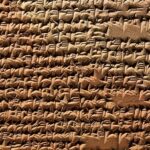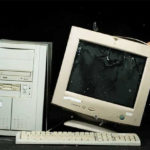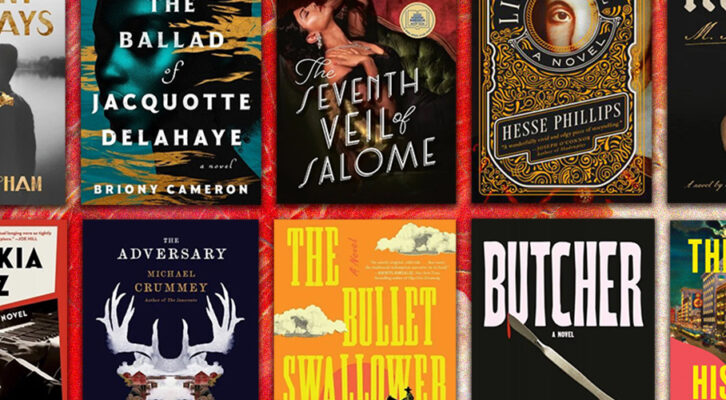Writers and Their Favorite Tools
On Pens, Pencils, and other Fetish Objects
In seventh grade, I started hanging out with a girl who wore thick, dark eyeliner and convinced me to shoplift. We’d walk to Main Street after school. One of my favorite shops was the office supply store—no surprise to anyone who knew my nerdy self. I spent a long time in front of the pens, trying each one out on the Post-It notes on display. I’d uncap a Pilot Varsity disposable fountain pen (turquoise ink) and write SMILE! with a Super S, one of those strange blocky S’s that was popular in the 1990s. One day, my friend encouraged me to just stuff a bunch of pens into the pocket of my monogrammed eggplant-purple L.L. Bean bag. I caved to peer pressure, but immediately regretted it. It was too late. The cashier noticed.
“Give the pens back immediately, and we won’t call the police.”
Panicking, I unzipped my bag and grabbed the fistful of stolen loot, dropping them on the counter in one guilty gesture.
As a teenager, I got a job at Staples. I’ve always loved office supplies. I have fond memories of going back-to-school shopping with my mother, picking out a Lisa Frank trapper keeper, a planner (maybe this would be the year I’d finally get organized!), journals with college-ruled lines so I could write tiny, bold letters with my Bic mechanical pencils, which I coveted even though the thin lead constantly broke.
Nowadays, I sometimes write by hand in my Moleskine journals with the same pens I obsessively used throughout high school and college: Pilot P-700 Rollerball Stick Gel Pens, preferably in blue or purple.
I am not alone in my intense relationship to the tools of the writing trade, so I thought I’d ask some writers I deeply admire about their favorite pens and pencils. The first person who came to mind was Mary Norris, author of Between You & Me: Confessions of a Comma Queen and a copy editor for The New Yorker.
“I have a lot of nerve, as a non-artist, being so precious about pencils,” Norris says. “But when I copy-edit with Blackwings I think of something a friend’s mother once said as she bought underwear for her daughter who was going off to nursing school: ‘As long as you have to wear that uniform, you might as well feel fancy underneath.’”
Maud Newton also prefers Blackwings. “For a long time I was skeptical of fancy writing implements but my friend gave me a box of Blackwings when the line was revived, and I’m a convert.” She even wrote a blog post about them.
Walton Muyumba finds that basic Bic mechanical pencils work best for him. “I buy and use Bic mechanicals, .5mm lead. I try handwriting in draft mode and in my journals. I drag my hand a bit when writing, so ink is tough cause smears can’t be corrected. Pencils allow me to correct easily. I also write hard. Apparently, I’m heavy handed. The .5mm lead is thick enough to withstand the pressure of my writing. I learned to write with pencils from annotating novels in college. I could correct weak impressions and add in clean notes with out staining pages. Of course, I still read with pencil in hand.”
Maggie Nelson likes mechanical pencils. “Any brand, though recently I’ve learned that generics from Target can’t stand much pressure.”
Kiese Laymon is a fan of Paper Mate Sharpwriters. “I like those yellow mechanical pencils because I’m so old that having those in school meant you were kinda cool,” he says. “I never had them. So now I have hundreds.”
There’s a certain amount of nostalgia attached to our decisions.
“Often I write on my laptop, but when I’m working through a particularly difficult passage, I grab one of dozens of black Dixon Ticonderoga #2 pencils I keep sharpened to a lethal point on my desk, in a gorgeous stone jar,” Anna March says. “The jar, my own private madeleine, was made for me specifically to hold my pencils, by a potter, Richard Mower, who I worked for the summer I was 19. I look at that jar and hear Joni Mitchell singing, ‘The Last Time I Saw Richard’ and see the cicadas that blanketed Washington that summer and remember the man I was dating who introduced me to rich Châteauneuf-du-Pape. I discovered Adrienne Rich that summer, too, ‘The words are purposes. The words are maps.’ Somehow those pencils and that jar from my last teenage year takes me back to my most elemental self, the same self who learned to write holding a chubby pencil and then graduated to the traditional yellow Dixon Ticonderoga. I switched to black ones somewhere along the line, probably thinking I was too punk rock for a kid’s pencil, probably imagining black pencils were the sort of thing Gertrude Stein would have approved of and Nelson Algren might have liked. I had notions of such things once upon a time. I like using a pencil to write, like the connection to my childhood, to the standardized tests I loved taking, and to summers that made me who I am. A pencil is magic; there is the feeling that anything can be fixed, just look at the eraser right there at the top, ready to undue whatever might need to be whisked away.”
This yearning to connect with not just our old selves, but our true selves, is part of the reason Caroline Weaver recently opened a pencil shop, CW Pencil Enterprise, on Forsyth Street in Manhattan. She sells “200-250 different types of pencils, ranging from 25 cents to $60.00 each.”
“I do talk to a lot of writers, most of whom are looking for an inspiring pencil—something vintage often, or just something they’ve never used before,” Weaver says. “We have a pencil testing station so they can sit down and try them all to find the perfect one. Each writer I’ve met has wanted something different in a pencil. Whether it be something scratch, something smooth, something dark or even a specific shape and diameter of graphite.” But she couldn’t really pick a favorite for herself.
“To me, that’s like choosing a favorite child. I use a rotation of pencils and appreciate them all for different reasons though to me a perfect pencil is smooth but not slippery, and dark but not smudgy. I love a pencil with a story and have a special fondness for mid-century vintage American made pencils.”
Many writers still prefer pens. Pilot G2s are overwhelmingly popular among those I polled, including Susan Orlean, Gillian Flynn, and Matt Bell. In Flynn’s case, she likes the Retractable Gel Ink. “I do my ‘real writing’ on a laptop but all my thinking—notes, plots, character development—longhand,” Flynn says. “They just have a glide to them I love; they actually make it fun to write, or to, say, draw a cat over and over again, which is what I do when I have writer’s block.”
Eileen Myles likes Pilot G-2 10’s. “For pencils, a fat Ticonderoga.”
Some writers choose a pen that’s more versatile. “I use 0.7mm Pilot FriXion pens, in black, because they write smoothly and because the ink is erasable, which is important because I have worse handwriting than a doctor,” says Warren Ellis.
In Maria Dhavana Headley’s case, she tries to find pens that won’t smear. “I’m left-handed, so I’ve spent my writing life battling smudge. My handwritten things look like ancient documents that’ve bathed in the elements. I type most of the time, but if I’m using a pen, it’s probably one of these fine point Sharpie situations. Neil Gaiman handed me his lovely (but expendable—he knows what I am) fountain pen recently, to autograph a copy of Magonia for him, and I made a spectacular nib-bending ink splot instead of a ‘Dear Neil.’ I want to use gorgeous pens, but they refuse me.”
Paul Harding has a similar problem. “I annotate my books and student manuscripts with a blue Pilot V5, because it has such a fine line. I sign books with a blue Uniball Something or Other because it has such a fat line. Otherwise, I’m indifferent. In a perfect world, I’d have some kind of gorgeous fountain pen with sapphire ink or something, but I’m a lefty so I just smear away everything I write with them, so that’s that.”
The artist and writer Molly Crabapple likes cheap drugstore mechanical pencils, extra fine black Pilot pens, Joseph Gillott 1954 nibs, and Black Magic ink. “They’re precise, fine and finicky,” she says.
Chelsea Hodson uses a black Zebra F-301 Retractable Ballpoint, 0.7mm. “It’s neat and simple and doesn’t bleed—the opposite of most things I love,” she says.
Katherine Angel uses Muji Gel Inks, 0.5mm. “It’s basically gel ink pens all the way. And it drives me crazy that you can only take pencils in to the British Library reading rooms. I can only think properly with a pen!!”
“I’d write with lipstick if there were nothing else,” Margaret Atwood says. “But: smooth-flowing rollerballs with replacement available; LAMY ink pens or TOMBO ones; pencils on a plane (don’t leak). How ’bout that? (I date from the days of inkwells and steel nibs in grade school. Good for dipping girls’ pigtails in. Imagine that.)”
Atwood makes an excellent point with regards to what to use on the plane. Many writers have to consider what to bring with them on book tour. That’s one of the reasons Emily St. John Mandel prefers the Faber-Castell Broadpen 1554.
“I picked up a couple at a Waterstones store when I was on tour in the UK a few months back, and loved them so much that I found the manufacturer online and ordered several boxes of them, some in black ink and some in blue,” she says. “I like them because they’re felt-tip pens, which is important because I travel constantly and felt-tip pens don’t leak on airplanes, and they have a satisfyingly bold line.”
There’s a certain amount of fetishizing when it comes to writing by hand, whether it’s the way it writes or the name of the pen.
“My choice writing weapon is the Uni-Ball Impact Gel Pen Bold Point Open Stock-Gold,” David Tomas Martinez says. “Honestly, in part, this is my go-to battle ax because it is fun to say ‘Uni-Ball Impact Gel Pen Bold Point Open Stock-Gold,’ but lets go with U-BIGPBPOS-Gold for the sake of time. Sarabande Books impresses their logo on the first and last page of each of their books, and my book is only one of two in the history of the press to have a ‘special’ black page impression, onto which I add a special touch, a swirl of gold or two, a personalized note to each generous reader when they purchase Hustle. I am thankful for this moment to connect with another human, a fellow reader and belly-flopper of life, and this is why the Uni-Ball Impact Gel Pen Bold Point Open Stock-Gold is so special to me.”
For Bhanu Kapil, it’s all about the way the ink flows.
“I like biros that are fast and creamy,” she says. “Blue ones in particular; a Bic crystal 16mm is perfect. The critic David Banash once presented me with a very posh German pencil. But it was swiftly repurposed as a hair keeper-upper. I had thoughts of writing with it, though. I’m always trying to buy the perfect gel pen but am perennially disappointed. I would lose a Mont Blanc. In England, I wrote in ink. Black or blue. A permanent stain on the middle finger of my right hand.”
Bic pens were Anthony Marra’s first choice, until he discovered Pilot V7s.
“Usually the only time I write by hand is when I’m trying to generate a bit of forward momentum and untether myself from the delete key. That being the case, I never use pencils. For a while the regular Bic ballpoints were my go-to pen, largely since I couldn’t see myself paying more than a quarter for a bit of plastic I’d likely lose within a week. But then one day I tried a Pilot V7 (cue a soaring Hans Zimmer score) and I have to say, in that moment at least, it seemed a miracle of human ingenuity. It hardly needs to graze the page to write words that at least look good. I tried to go back to the Bic, but it may as well have been a goose quill. It was then that I realized two things. First, that my ideal pen is one that writes with the least amount of physical effort, and second, that I have a very low bar for what constitutes physical effort. My invertebrate ancestors would be proud.”
In Benjamin Percy’s case, it’s not what he writes with: it’s what he’s reminded of: “I have a fondness for yellow legal tablets—in which I scratch notes—but otherwise, I’m not fussy. So many writers get religious about their gels or rollerballs, but I pay no attention, maybe because my handwriting looks like a tangle of barbed wire no matter what I’m using. I travel constantly and all of my pens come from hotels. When I reach for one—all of them labeled, a Marriott in Omaha, a Hilton in Portland, the Pfister in Milkwaukee—I get a little surge of someplace-elseness.”
Megan Stielstra isn’t particular about what she uses, either. She’ll use whatever is on hand to get the words on the page.
“I’d love to be all fancy and say Pilot Custom 74 or TWSBI 580 but the truth is, I use whatever is closest,” Stielstra says. “These days it’s mostly paragraphs or notes scribbled in Crayola marker on the back of receipts or junk mail. I have a seven-year-old kid, and I’m changing jobs, and my husband runs an online art shop out of our house, so everything is chaotic and wild and messy—wonderful, yes—but bonkers. I have longer stretches of time to write in the afternoon, but that’s straight into the laptop; the rest of the time, it’s on-the-go, and I don’t really care which kind of pen/pencil/crayon/eyeliner I use so long as there’s something within reach when I get an idea. The book I’m working on right now is about fear, and it’s kind of hilarious to read back over my notes on this fairly dark topic, written in thick, sprawling pink or purple on the margins of a phone bill and Scotch-taped into a journal.”
For Jamie Iredell, what he uses depends on what he’s working on.
“I prefer basic yellow #2 pencils when working on drafts of poems (my own, or students’), and I use these to mark-up drafts, cross out lines, write in ideas for new or revised lines, etc.,” he says. “I don’t know why it is (probably it’s just from reading/teaching Richard Hugo’s The Triggering Town so many times over the years) that the idea of the permanence of ink has made me feel an affinity toward pencils when working on poems. Sometimes, for expediency, or just because I happen to acquire one, I use a regular Bic mechanical pencil. As for pens, I have a real thing for the Pilot V5 rolling ballpoint pen. I think this came about as a result of my friendship with the poet Mike Dockins, who loves to use these pens exclusively. While I don’t use them exclusively, they’re the pens I like most. But, still, when I use a pen, that means things are getting serious, and I guess I feel, permanent.”
Lev Grossman appreciates the pen or pencil as fetish object.
“I love pens and pencils, but it’s a futile, unrequited love, because my handwriting is so terrible that there’s almost no point in my using them, even fancy ones. For years I had a nice, precise Rotring 800 mechanical pencil—which I got as a gift, and which sells for something like $85, and which produces beautiful effortless clear lines and curlicues. But not even that gorgeous instrument could make my notes legible. These days I love pens and pencils as fetish objects, but I don’t actually use them.”
Sometimes it’s an accidental choice.
“My current favorite pen is the Pilot Precise V5,” Karolina Waclawiak says. “I don’t know where I got it from, as is the case with most of my pens. They just seem to end up in my purse from such exotic locales as brunch table or bookstore counter. I want to be clear that I don’t purposely steal pens. It’s some kind of tic, maybe. This particular beauty, which I will for sure lose one day soon (the universe righting itself), has a nice black ink flow and is good for scribbling down nonsensical notes to myself about what my character should do next.”
Returning to pen and paper can lead to better work for anyone who feels stuck.
“I never used a pen or a pencil much until around the time Praying Drunk was published,” Kyle Minor says. “I’d been writing fiction for ten years, and I was starting to feel weird and locked-in with words. Sometimes I would stare at my computer and feel panic and despair. It helped to stop writing for a little while. I took drawing classes, and I bought drawing pencils and ink and brushes and tried to make stories with pictures instead of words for a few months. Now I find it opens things up to spend less time on the computer, and more time with a nice range of drawing pencils, and with a bottle of India ink and a brush.”




















